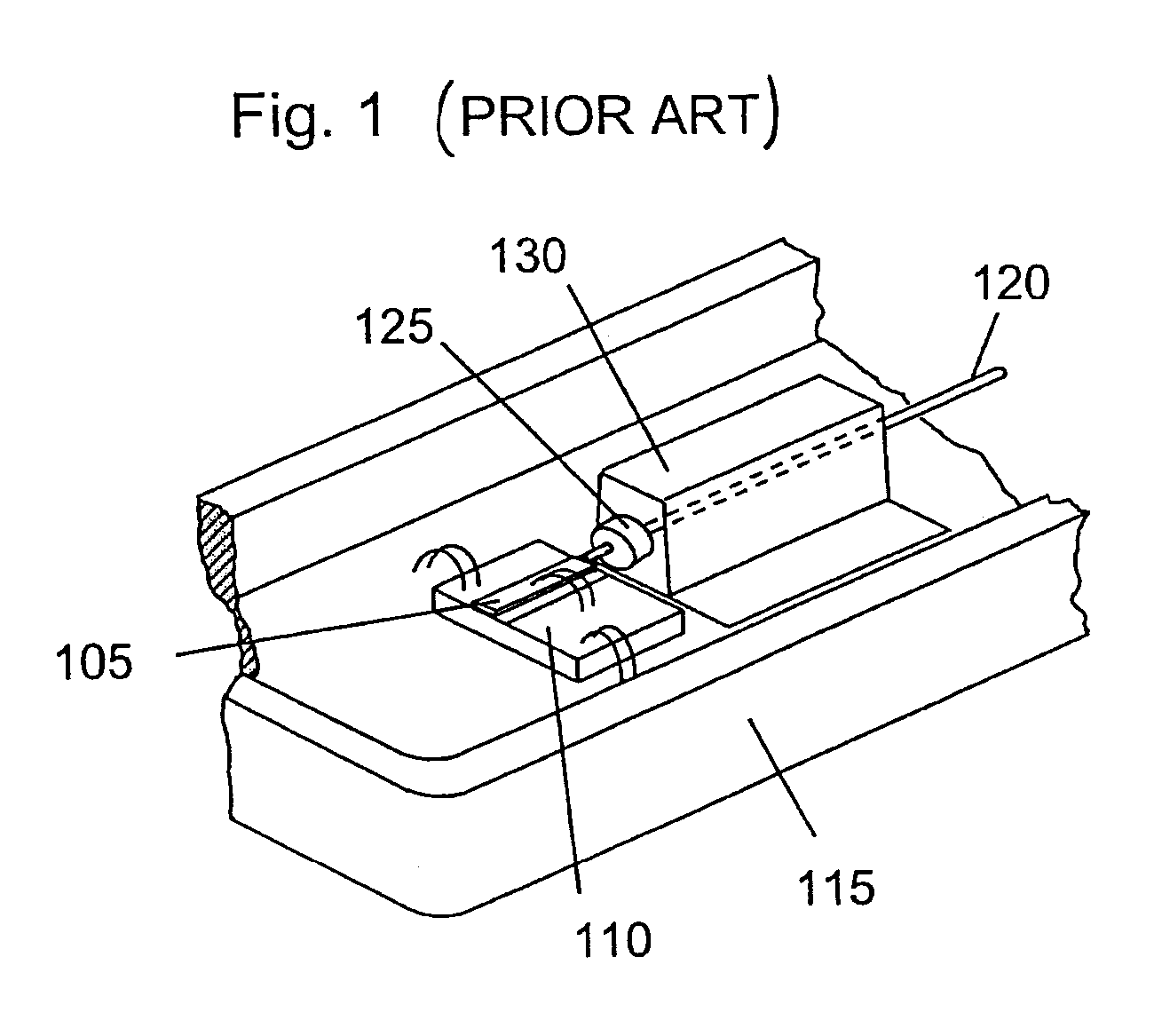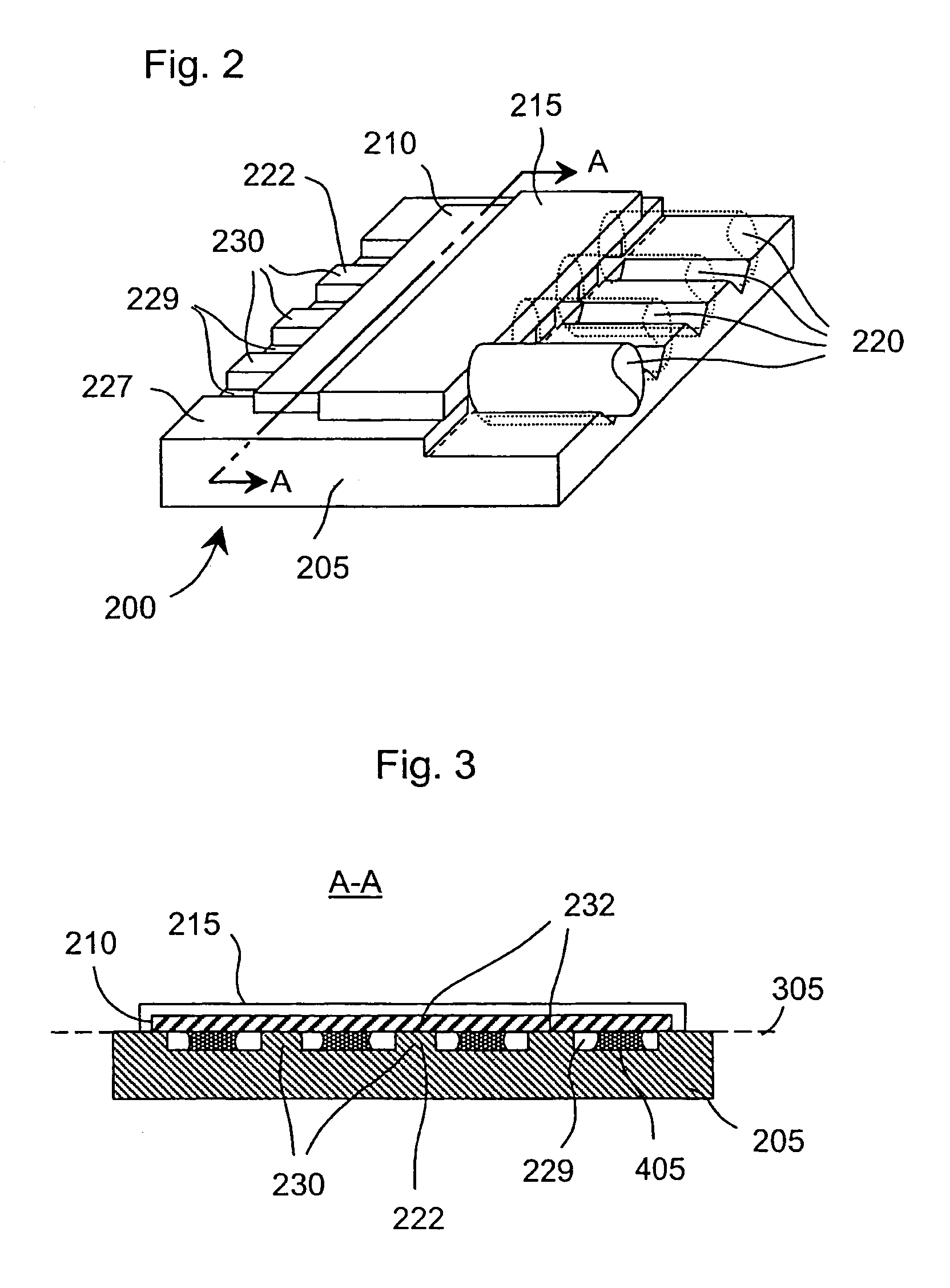Multi-channel laser pump source for optical amplifiers
a laser pump source and optical amplifier technology, applied in semiconductor lasers, optical elements, instruments, etc., can solve the problems of increasing affecting the overall cost of the amplifier, so as to reduce the number of manufacturing steps, facilitate the manufacturing process, and facilitate the manufacturing process. the effect of high efficiency coupling
- Summary
- Abstract
- Description
- Claims
- Application Information
AI Technical Summary
Benefits of technology
Problems solved by technology
Method used
Image
Examples
Embodiment Construction
[0051]The invention will now be described in reference to various non-limiting embodiments thereof. It should be noted that individual elements or features of different embodiments described below may be combined in various permutations to produce a laser pump source having a set of desired physical and / or operational characteristics, and that such combinations are within the scope of the present invention.
[0052]FIG. 2 illustrates an embodiment of a semiconductor diode laser pump source 200 in accordance with aspects of the invention. Pump source 200 is shown to include several major components: a submount 205, a diode laser array (hereinafter “laser array”) 210, an integrated optic (IO) waveguide chip 215 and an optical fiber array 220. As used herein, an optical “array” is a device that includes two or more optical ports. The submount 205, laser array 210 and IO chip 215 are shown in greater detail in FIG. 22, which illustrates in particular opposing edges 250 and 255 of laser arr...
PUM
| Property | Measurement | Unit |
|---|---|---|
| wavelengths | aaaaa | aaaaa |
| wavelengths | aaaaa | aaaaa |
| wavelengths | aaaaa | aaaaa |
Abstract
Description
Claims
Application Information
 Login to View More
Login to View More - R&D
- Intellectual Property
- Life Sciences
- Materials
- Tech Scout
- Unparalleled Data Quality
- Higher Quality Content
- 60% Fewer Hallucinations
Browse by: Latest US Patents, China's latest patents, Technical Efficacy Thesaurus, Application Domain, Technology Topic, Popular Technical Reports.
© 2025 PatSnap. All rights reserved.Legal|Privacy policy|Modern Slavery Act Transparency Statement|Sitemap|About US| Contact US: help@patsnap.com



